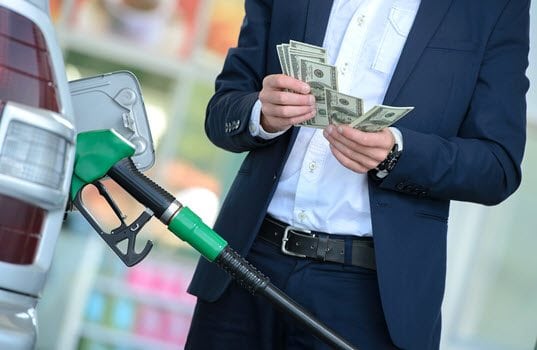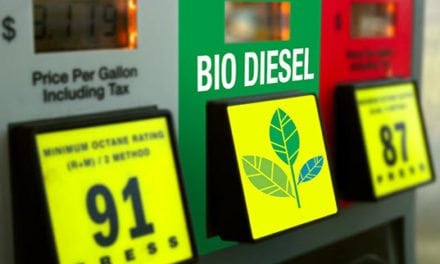By Joe Petrowski
With all of the talk on tax reform not much focus has been placed on the largest source of government revenue, and that is the motor fuel taxes (state, fed and Local). In fact, with all the Republican giddiness over corporate taxes they contributed less than $1 trillion per year while individual income taxes contributed $1.6 trillion and payroll $1.2 trillion. Motor fuel alone contributes $8.9 trillion between state and federal and in some cases local taxes. Now most of that $8.9 trillion is suppose to go into the highway trust fund to build and maintain roads, bridges and other transport infrastructure (and if you think those funds are segregated for that use I have a phantom bridge to nowhere for sale).
The reality is that annual government expenditures are roughly $4.5 trillion while total tax collected is roughly $3.4 trillion consisting of:
- Income taxes $1.6 trillion
- Payroll $1.2 trillion
- Corporate $0.3 trillion
- Other $0.26 trillion (Do you want to guess where some of this comes from? It is not park fees and import levies!)
With tax collection from corporate, income and payroll taxes decreasing $700 billion even at 3.5% growth, and federal expenditures destined to increase $500 billion (defense, infrastructure, entitlements) the government needs to “find” $1 trillion from the “other” category unless we want to see the annual deficit and cumulative debt grow to unsustainable and economy threatening levels (especially as interest rates rise). The motor fuel industry is the fat piñata in the room.
And it is not a Willie Sutton argument (“That is where the money is”) but remember:
- Oil companies are rich and evil (or am I being redundant)
- Our planet is dying (might be true but I blame stupid leadership more than CO2)
- It is a tax easy to collect and essentially invisible unlike your pay-stub, April 15 or the estate tax
- It is fair because everyone pays it and there is no division between rich and poor, race, age or sexual orientation, etc.
We have not had a raise in federal and most state fuel taxes for several years as if that is a persuasive reason for a tax raise. (Gosh you have not been punched in the nose since high school–how about you experience it for old times’ sake?)
So with 190 billion gallons of diesel and gasoline being consumed each year generating $8.9 trillion the state, feds and locals are contributing 46 cents per gallon–18.4 from federal and the balance from state, county and local.
The first federal excise tax was imposed in 1932 and was 1 cent per gallon (called temporary by the usual Washington comedians), and interestingly it was not to fund roads or infrastructure but to pay down the deficit caused by the depression. Hoover foolishly raised many taxes to balance the deficit causing a worse economic downturn in 1933-1935, which made him shortly an ex-President. Subsequent increases in the federal excise tax were for fiscal reasons mainly funding wars (in 1940 in anticipation of WWII and in 1951 for the Korean War). They would have gone up further in WW2 but with rationing in effect on fuel, no new consumer vehicles or tires even the government was smart enough to recognize this would not raise revenue.
There is little doubt fuel taxes are headed up and in addition to the reasons previously outlined an argument can be made that today’s federal tax of 18.4 cents is in real dollars the same as 1 cent in 1932 (1 cent in 1932 is 17.6 cents today, but as they say “close for government accounting.” There is little doubt federal tax on gasoline will go to 25 cents/gallon with the following arguments being made:
- On parity with diesel
- Only 50% higher in real terms than 1 cent in 1932
- Lower than 50% of state gasoline taxes
- Will raise $20 billion per year or 1 trillion over 10 years given growth in transport fuels (that our government refuses to recognize is over as evidenced by “blend wall” myopia)
- Federal Reserve will applaud given their concern over the tax bill induced fiscal stimulus as interest rates are rising
More critically this will give the go-ahead to many states facing high debt loads and annual deficits to raise their own fuel taxes. Adding in whether a state is blue or red gives you the following probability of a fuel tax increase by state:
Low Probability High Probability
Nebraska NY
Tennessee Missouri
Indiana Massachusetts
Virginia Maryland
S Dakota Louisiana
Florida California
Wyoming Maine
Iowa Michigan
N Dakota Rhode Island
Idaho Illinois
Utah Connecticut
Arizona New Jersey
Ohio
West Virginia
Pennsylvania will see a gas tax increase, but at $1/gallon on they are hopefully satiated on diesel tax.
An important issue for the petroleum motor fuel industry is how to tax electric cars and natural gas vehicles so that tax neutrality among fuels is embraced. This probably sentences my friend (association attorney) Tim Columbus and others representing petroleum retailers to long excruciating hours at the department of Weights and Measures, and like all taxes launch a drive for exemptions and credits for some operators and shippers. Tax simplification is like “dry water”–an oxymoron that only a bureaucrat could cling to.
Joe Petrowski has had a long career in international commodity trading, energy and retail management and public policy development. In 2005, he was named President and CEO of Gulf Oil LP and elected to the Gulf Oil LP Board of Directors. In October 2008, he was named CEO of the now combined Gulf Oil and Cumberland Farms, whose annual revenues exceed $11 billion and who now operates in 27 states. In September 2013, Petrowski stepped down as CEO of The Cumberland Gulf Group. He is now the Managing Director of Mercantor Partners, a private equity firm investing in convenience and energy distribution. Joe is also a member of the Gulf, Yesway and Green Print, LLC boards.










